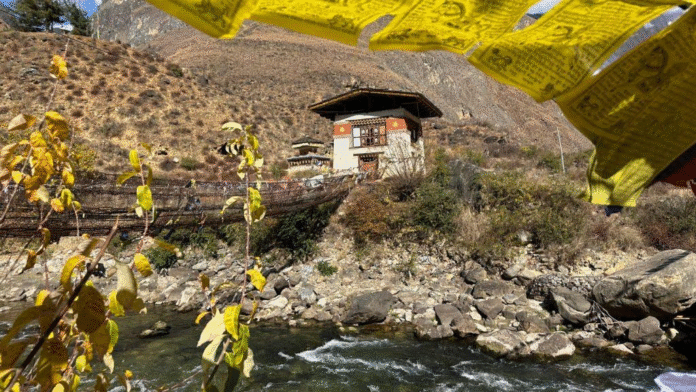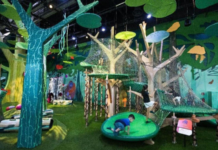Tucked between India and China, the Himalayan kingdom of Bhutan has long intrigued travellers seeking something beyond the ordinary. With fewer than 800,000 residents and a development model rooted in Gross National Happiness (GNH) rather than GDP, the country stands as a rare example of measured progress in an age of hyperglobalisation.
For visitors, Bhutan is not merely a destination—it is a philosophy brought to life.
Arrival Among the Clouds
Flying into Bhutan is an experience in itself. National carriers Drukair and Bhutan Airlines connect Paro International Airport with major hubs such as Bangkok, Delhi, and Kathmandu. On clear days, passengers are treated to sweeping views of the Himalayas, including Everest and Kangchenjunga. The dramatic landing at Paro—considered one of the world’s most challenging—sets the tone for a journey defined by awe, reflection, and discovery.
A Nation Guided by Gross National Happiness
Introduced by King Jigme Singye Wangchuck, Bhutan’s GNH framework rests on four pillars: sustainable development, environmental protection, cultural preservation, and good governance. This philosophy informs every sphere of life, from national planning to the way tourism is managed.
In the capital, Thimphu, the balance between tradition and modernity is palpable. There are no traffic lights—only white-gloved policemen guiding vehicles. Monks in crimson robes mingle with office-goers in national dress, while fortress-monasteries (dzongs) anchor the skyline. The city’s rhythm is calm yet purposeful, offering visitors a refreshing contrast to the rush of urban Asia.
Tourism with Intent
Bhutan welcomed just over 103,000 international visitors in 2024, a modest figure compared with neighbouring Himalayan destinations. India remains the largest source market, followed by the US, China, the UK, and Germany.
But unlike many nations, Bhutan has no ambitions for mass tourism. Its “High Value, Low Volume” policy limits visitor numbers through the Sustainable Development Fee (SDF)—recently adjusted to US$100 per person per night until 2027. This ensures that revenue supports conservation, heritage, and community well-being while protecting the nation from the pitfalls of overtourism.
This deliberate approach has allowed Bhutan to position tourism as a tool for preservation rather than exploitation.
Landscapes of Timeless Beauty
Bhutan’s landscapes embody the spirit of permanence. Prayer flags flutter across high ridges, dzongs dominate valleys, and cliffside monasteries defy gravity. None is more iconic than Taktsang, or Tiger’s Nest Monastery, perched dramatically 900 metres above the Paro Valley. The hike to its gates is both physically demanding and spiritually rewarding.
In Phobjikha Valley, black-necked cranes migrate each winter, celebrated with festivals that unite conservation and culture. Bumthang, often called Bhutan’s spiritual heart, offers ancient temples, apple orchards, and pastoral calm. Across the kingdom, fortress-monasteries such as Punakha and Trongsa continue to serve as both civic and spiritual centres.
Culture, Cuisine, and Daily Life
Bhutanese culture is deeply rooted and proudly displayed. Traditional dress is worn daily, not just ceremonially, reflecting resilience in the face of global homogenisation.
The cuisine is equally distinctive. Ema datshi—chillies simmered in cheese—remains a staple, typically paired with red rice and butter tea. More than a meal, it is a reflection of the Bhutanese spirit: simple, hearty, and unpretentious.
Archery, the national sport, is both an athletic competition and a cultural celebration, often accompanied by song, dance, and community gathering.
Authentic Stays
Among Bhutan’s accommodations, Zhiwa Ling Heritage in Paro stands as a benchmark for authenticity. Handcrafted over five years, it fuses Bhutanese artistry with quiet luxury, offering carved woodwork, temple-style courtyards, and an atmosphere of serene retreat. Its sister property, Zhiwa Ling Ascent in Thimphu, combines eco-conscious design with sweeping city views, appealing to modern travellers while maintaining a strong cultural connection.
A Broader Ethos of Care
Bhutan’s people-first philosophy extends beyond tourism. Healthcare is free for citizens, supported by a nationwide network of hospitals and clinics, including the Jigme Dorji Wangchuck National Referral Hospital in Thimphu. In a region where healthcare access is often unequal, Bhutan’s model underscores its commitment to equity, compassion, and human dignity.
Why Bhutan Matters Now
Bhutan is not untouched by modernity—Wi-Fi is available, students pursue higher education abroad, and international hotel brands are expanding. Yet the pace of change is deliberate, designed to safeguard what makes the country exceptional.
The message is clear: development can coexist with preservation. Tourism can enrich without overwhelming. Happiness can be a national aspiration.
For travellers, Bhutan offers more than landscapes and monuments. It offers perspective—a chance to slow down, live mindfully, and reflect on what it means to pursue balance in a restless world.
If You Go: Essentials
- Airlines: Drukair and Bhutan Airlines connect Paro with Bangkok, Delhi, Kathmandu, and Singapore.
- Visa & SDF: All international visitors (except Indians) must book through licensed tour operators and pay the US$100 Sustainable Development Fee (per night until 2027).
- Best Time to Visit: March–May for rhododendron blooms; September–November for clear skies and festivals. Winter offers solitude and crisp air, while summer’s monsoons bring lush greenery.
- Where to Stay: Zhiwa Ling Heritage (Paro) for heritage luxury; Zhiwa Ling Ascent (Thimphu) for eco-modern comfort.
- Travel Tip: Distances are deceptive—mountain roads are winding. Embrace the slower pace; it is central to the Bhutanese experience.
In Brief
Top 5 Bhutan Festivals
- Paro Tsechu (March/April): Monastic mask dances, vibrant pageantry.
- Thimphu Tsechu (September): The capital’s grandest festival.
- Punakha Drubchen (February/March): Re-enactments of Bhutanese victories.
- Jambay Lhakhang Drup (October/November): Fire and mask dances in Bumthang.
- Black-Necked Crane Festival (November): Conservation meets culture in Phobjikha.
 Must-Try Bhutanese Dishes
Must-Try Bhutanese Dishes
- Ema Datshi – Chillies and cheese.
- Phaksha Paa – Pork with radish and red chillies.
- Momos – Dumplings with meat or cheese.
- Hoentay – Buckwheat dumplings from Haa Valley.
- Suja & Zaw – Butter tea with puffed rice.
 If You Go: Essentials
If You Go: Essentials
- Airlines: Drukair, Bhutan Airlines.
- Visa & SDF: US$100/night (except Indian nationals).
- Best Time:
- Spring (Mar–May): Rhododendrons.
- Autumn (Sep–Nov): Clear skies, festivals.
- Winter: Quiet, crisp air.
- Travel Tip: Mountain roads are winding—travel time is slow, but part of the experience.











